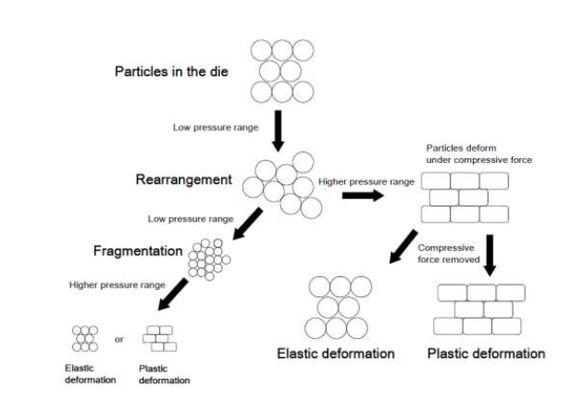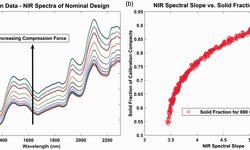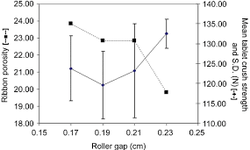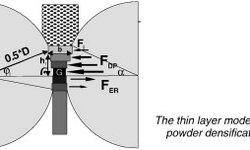Scientific papers
In recent years, the dry granulation technique known as roll compaction (DGRC) has gained significant attention from engineers and researchers, particularly in the pharmaceutical industry, due to its unique characteristic of not requiring a liquid binder. While DGRC is generally expected to enhance the properties of feed powders, such as flowability and bulk density, it has been reported that it may lead to a reduction in powder compactibility. Various powder properties, including size, shape, flowability, compactibility, and compressibility, were analyzed for several pharmaceutical excipients using state-of-the-art techniques. The elastic-plastic properties of single-component powders and mixtures were determined using the Drucker-Prager Cap (DPC) model, and an example of Finite Element Method (FEM) application was presented. All the determined properties were employed to investigate: 1) predicting ribbon milling outcomes from friability tests and 2) understanding the impact of granule size on die filling and die compaction behavior of pharmaceutical powders. A novel and straightforward method was developed for predicting fines produced during ribbon milling. An exponential relationship between the filling ratio and shoe speed was identified. Moreover, it was demonstrated that flowability is significantly influenced by granule size, with a decrease in tensile strength observed as granule size increases. Additionally, a strong correlation between flow indexes and critical filling speed was observed for all materials analyzed, and an empirical equation was derived.

Comments
No comments posted yet.
Add a comment















